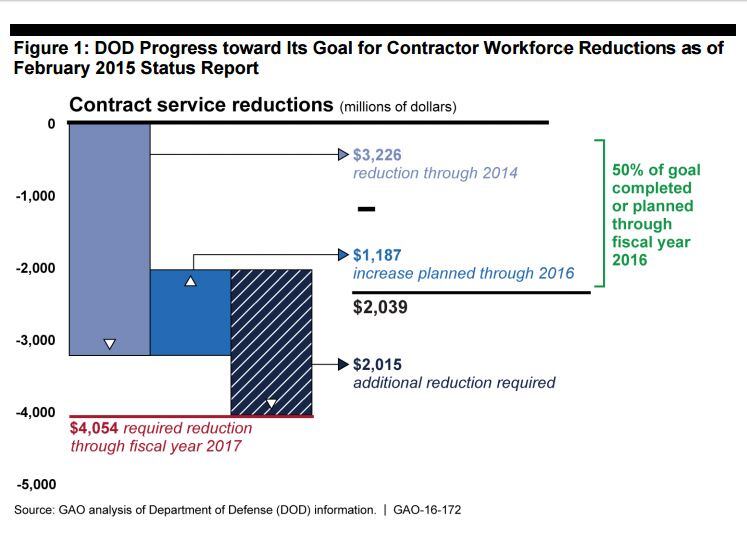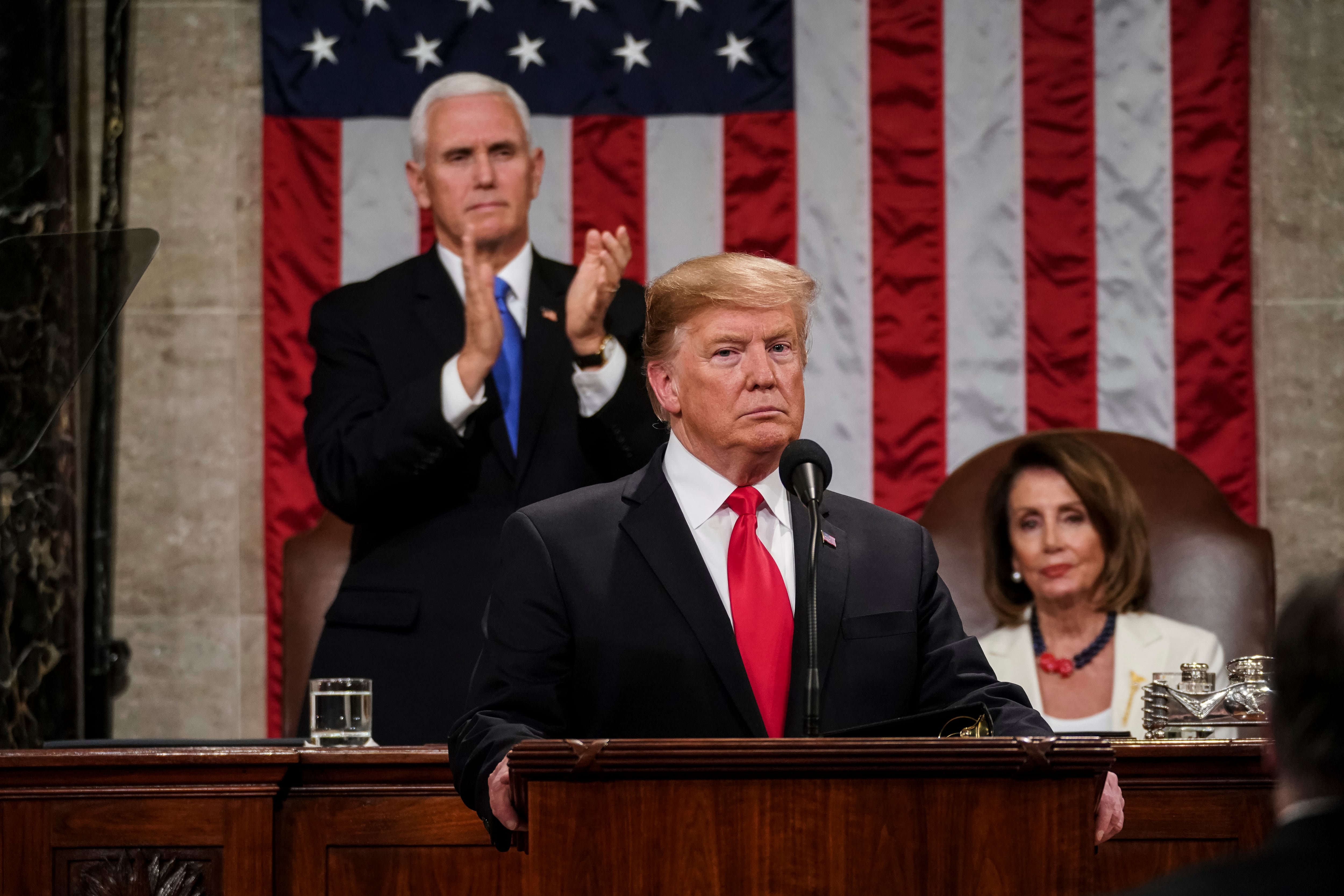The Department of Defense has been following a congressional directive to reduce spending on civilian and contract employees, the department told the Government Accountability Office. However, GAO investigators say they can't find the data to back this up.
GAO looked into whether the DoD has been complying with a mandate in the 2013 National Defense Authorization Act to bring down staffing levels and reduce expenses on the civilian side on par with similar reductions to military personnel, which total about 7 percent since 2012.
Report: Complete Information Needed to Assess DoD's Progress for Reductions and Associated Savings
The DoD's civilian staff is currently made up of about 756,000 full-time employees and at least 641,000 contractors — though that number is likely significantly higher, according to the GAO — compared with some 2.1 million military employees.
Congress also gave DoD authority to exempt certain critical civilian roles, reducing the pool for potential cuts by almost 70 percent. Under a plan submitted to Congress in February, DoD would bring the total civilian workforce — minus exclusions — from 238,000 in 2012 to 221,000 by 2017.
During that same period, budget records show civilian personnel costs — payroll and benefits — have dropped 0.9 percent, far short of the military side, which has dropped 8.1 percent. GAO investigators said that, since the cost reductions are not specifically pegged to personnel cuts, it's impossible to determine what effect those cuts are having on the bottom line.
Furthermore, DoD's 2016 budget includes an increase in spending on contractors, which will only make it more difficult to make up the other half of the congressional mandate with only one more fiscal year to hit the mark, currently estimated to be about $4.1 billion.

An increase in 2016 spending means DoD only has one more year to account for half of its cost reduction goals.
Photo Credit: GAO
"At a time when the entire federal government is facing fiscal challenges that are likely to continue, DoD must plan strategically for reductions to its civilian and contractor workforces to achieve savings," the GAO report concludes. "Fully meeting all of the requirements of [the NDAA provision] would be a step in the right direction in this regard and would provide Congress with assurance that the department is making progress."
Without having the right data on hand, the GAO warned it could not make a proper recommendation to Congress about where cuts should be made to achieve those savings.
GAO recommended including a more comprehensive plan — including proposed staff cuts and specific cost reductions — in the president's 2017 budget proposal.
Aaron Boyd is an awarding-winning journalist currently serving as editor of Federal Times — a Washington, D.C. institution covering federal workforce and contracting for more than 50 years — and Fifth Domain — a news and information hub focused on cybersecurity and cyberwar from a civilian, military and international perspective.




